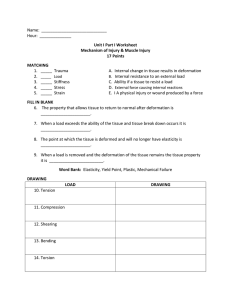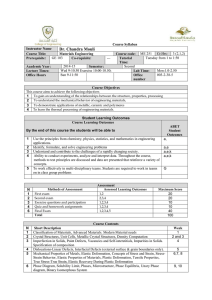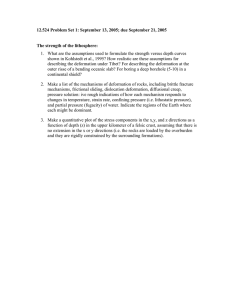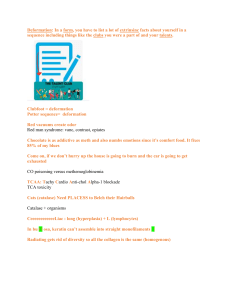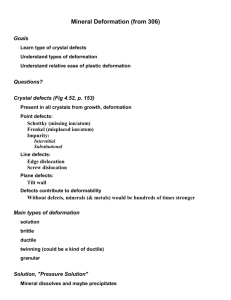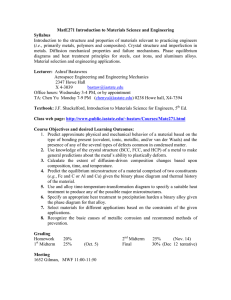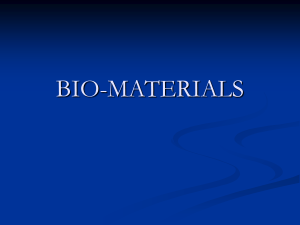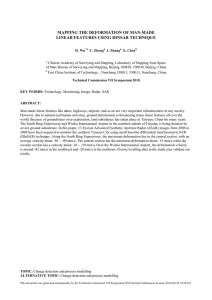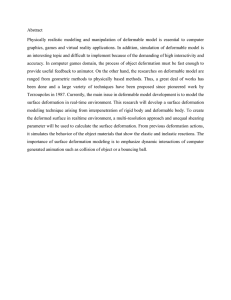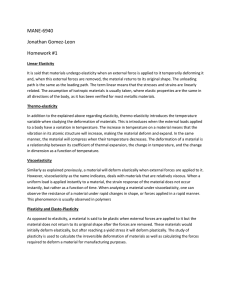EM 590F- Advanced Topics in Mechanics of materials Fall 2005
advertisement
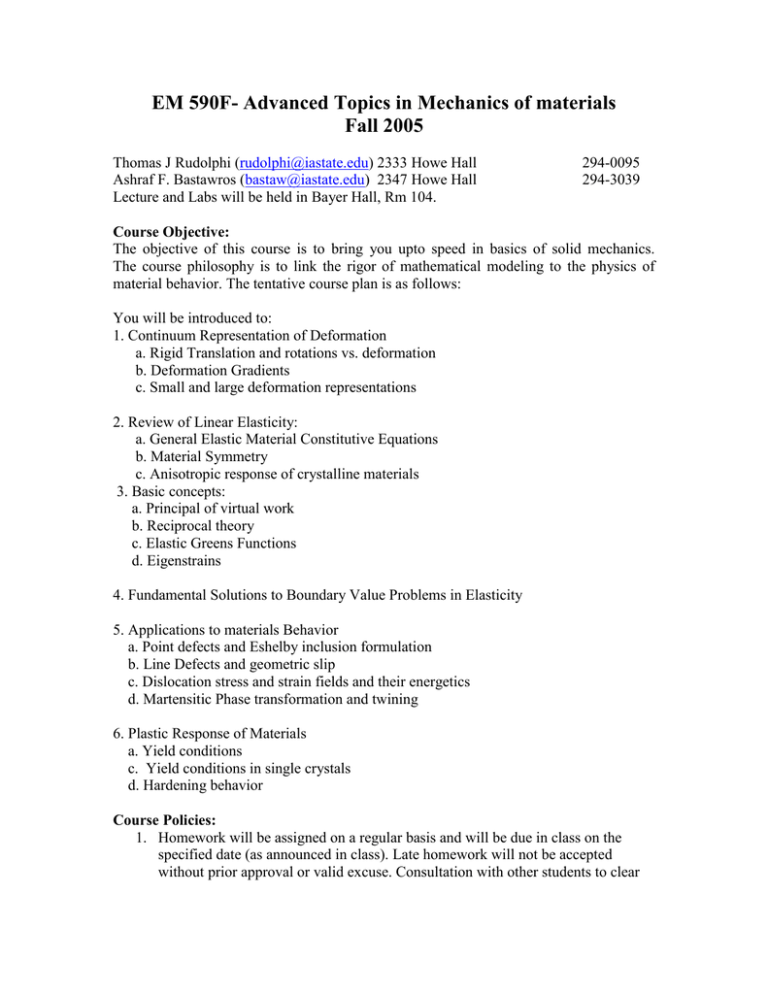
EM 590F- Advanced Topics in Mechanics of materials Fall 2005 Thomas J Rudolphi (rudolphi@iastate.edu) 2333 Howe Hall Ashraf F. Bastawros (bastaw@iastate.edu) 2347 Howe Hall Lecture and Labs will be held in Bayer Hall, Rm 104. 294-0095 294-3039 Course Objective: The objective of this course is to bring you upto speed in basics of solid mechanics. The course philosophy is to link the rigor of mathematical modeling to the physics of material behavior. The tentative course plan is as follows: You will be introduced to: 1. Continuum Representation of Deformation a. Rigid Translation and rotations vs. deformation b. Deformation Gradients c. Small and large deformation representations 2. Review of Linear Elasticity: a. General Elastic Material Constitutive Equations b. Material Symmetry c. Anisotropic response of crystalline materials 3. Basic concepts: a. Principal of virtual work b. Reciprocal theory c. Elastic Greens Functions d. Eigenstrains 4. Fundamental Solutions to Boundary Value Problems in Elasticity 5. Applications to materials Behavior a. Point defects and Eshelby inclusion formulation b. Line Defects and geometric slip c. Dislocation stress and strain fields and their energetics d. Martensitic Phase transformation and twining 6. Plastic Response of Materials a. Yield conditions c. Yield conditions in single crystals d. Hardening behavior Course Policies: 1. Homework will be assigned on a regular basis and will be due in class on the specified date (as announced in class). Late homework will not be accepted without prior approval or valid excuse. Consultation with other students to clear up confusion points is encouraged. However, all submitted homework must be your own work. Tentative Grading Homework 40% Midterm 20% Term paper Final 20% 20% - Letter grades will be given only for the final course grade and will be no lower than the following grade scale: A (93%), A-- (88%), B+ (85%), B ( 82%), B-- (78%), C+(75%),C (70%), ------Tentative Textbook: John Price Hirth, Jens Lothe, Theory of dislocations Rob Phillips, Crystals, Defects and Microstructures: Modeling Across scales. Keith Bowman, Mechanical Behavior of materials
